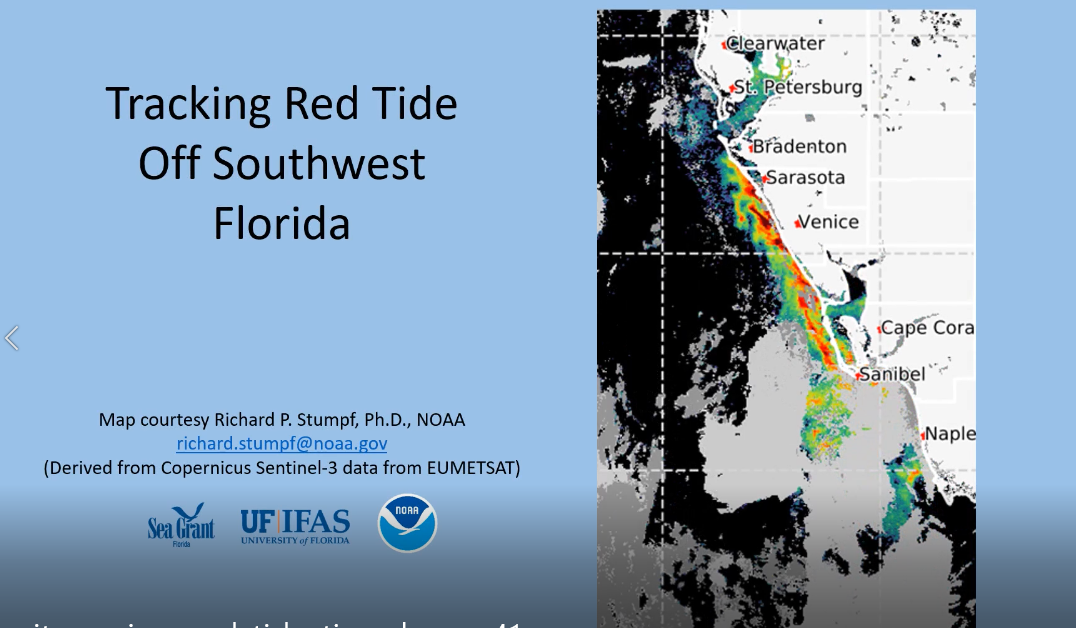Growing Algae to Remove Excess Nutrients
With all of the press regarding harmful algal blooms, it is sometimes easy to forget that most algae are good – in fact crucial for the health of our aquatic food webs. Algae also help us breathe, by producing oxygen as a by-product of photosynthesis. They’re also getting put to work to remove excess nutrients from stormwater runoff. This UF/IFAS blog post explains how Indian River County has built Egret Marsh Stormwater Park and Wildlife Sanctuary to clean stormwater runoff before it can enter the Indian River Lagoon.
Satellite Imagery Provides New Views of Lake Okeechobee’s Algae Problem
From on high, these images of Lake Okeechobee depict different aspects of the 2018 algal bloom season. The image on the left shows a true-color image, which is what you would see if looking down onto the lake from space. The image on the right is derived from an experimental product developed by Richard Stumpf from the NOAA National Ocean Service, who is working with Florida Sea Grant on products that interpret satellite data. The computer program takes the data showing reflected light across the visible spectrum, focuses only on that light range reflected by blue-green algae, and then produces a map showing the estimated density of blue-green algae cells in the lake.
Red Tide Satellite Imagery Reveals Intensity of Blooms Along Florida’s Gulf Coast
In the summer of 2018, a long simmering bloom of the harmful algae, Karenia brevis, intensified along the southwest Florida coast. This bloom was the continuation of a bloom that had begun in October 2017 and kept touching the coast all through the winter and spring.
This sequence of satellite images shows the development of the bloom from June through November 2018. This data was collected by the Sentinel-3a satellite, part of the European Union’s Copernicus mission. The “Ocean Land Colour Sensor” (OLCI) on the satellite measures many wavelengths of light across the spectrum. As a result, it is possible to identify the presence of chlorophyll. The method we are using involves fluorescence by the chlorophyll molecule, so the chlorophyll tends to be most visible during spring to fall months.

UF/IFAS Extension Works with Horse Industry to Manage Nutrient Impact of Manure Waste
On-farm research develops novel method for characterizing the impact of equine manure management practices on water quality. See More.
Florida has a large and diverse equine industry with the highest density of the state’s equine operations, about 50,000 horses, in Marion County. UF extension faculty are giving horse operations new tools to calculate how effective composting can be for minimizing negative impacts of manure waste on water quality. In Marion County, extension agents have partnered with three equine farms to test innovative and cost-effective ways to measure the nutrient profile of runoff at sites where manure is composted versus sites where manure is stockpiled. Being able to quantify the impact that different manure management practices have on freshwater systems will guide producers and decision makers as they develop Best Management Practices for manure management that will benefit not only water quality, but the sustainability of the equine industry overall.
Content developed and curated by Dorothy Zimmerman
 0
0
